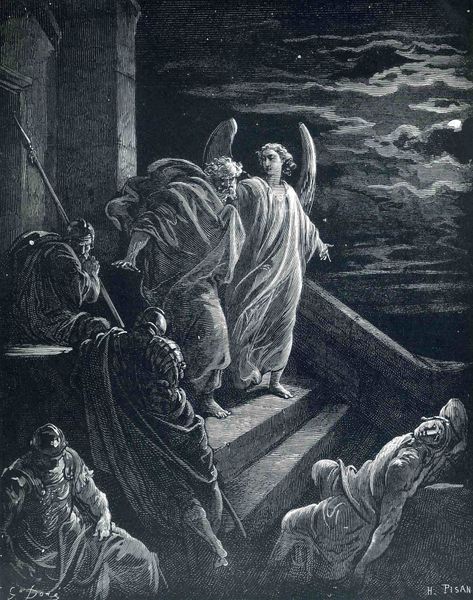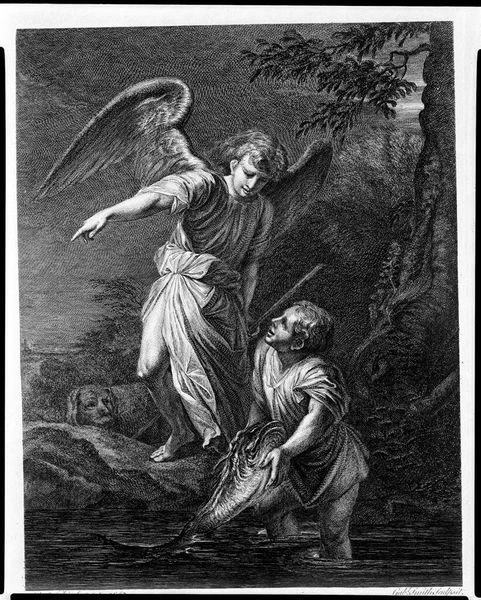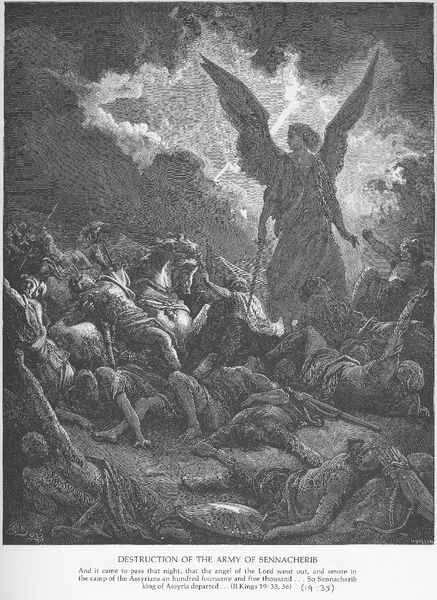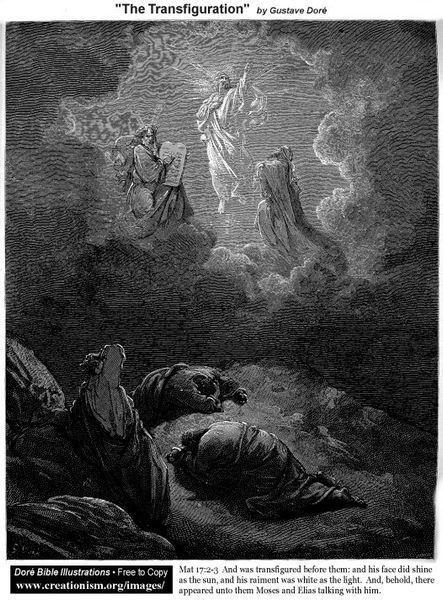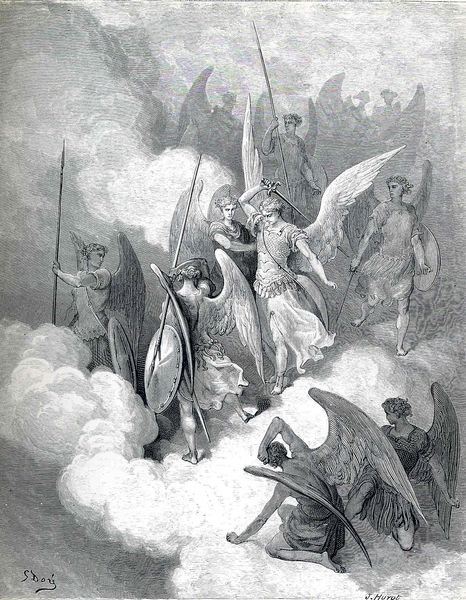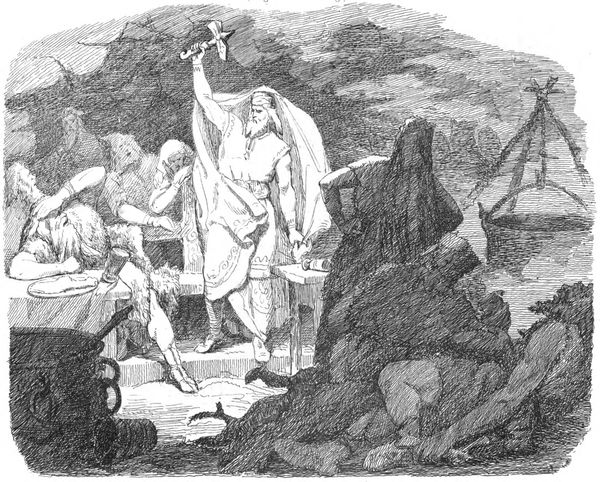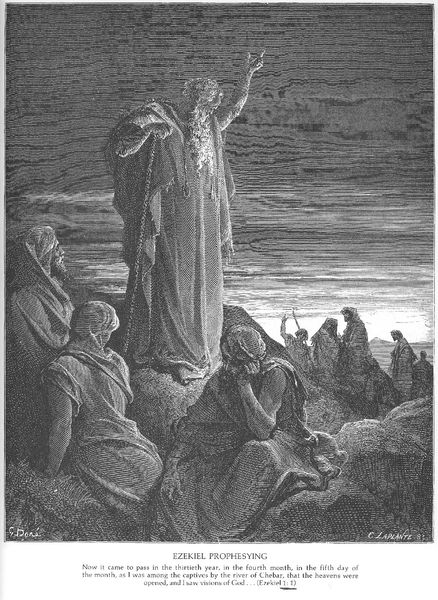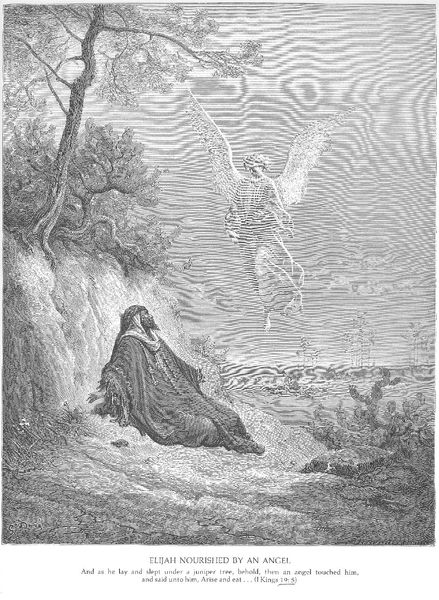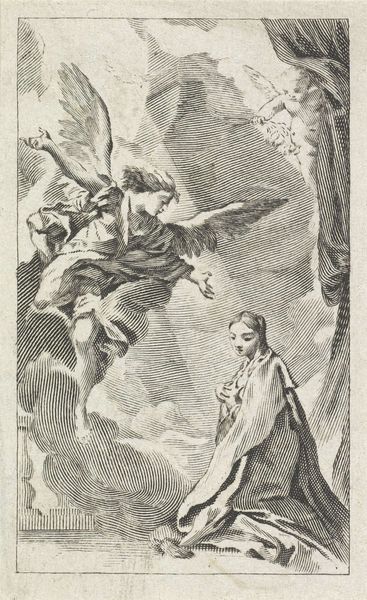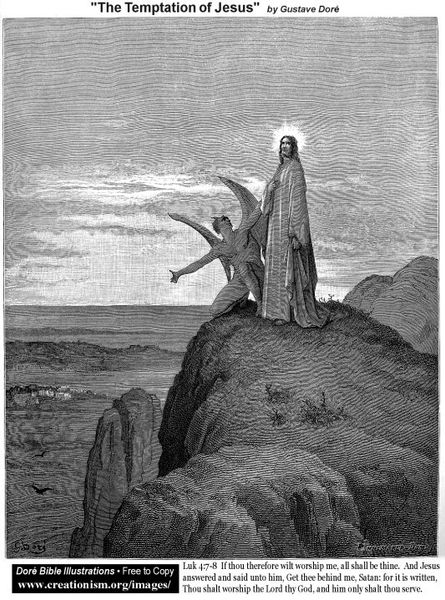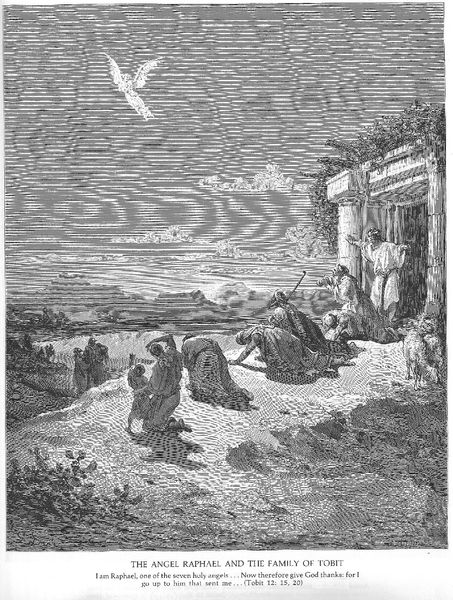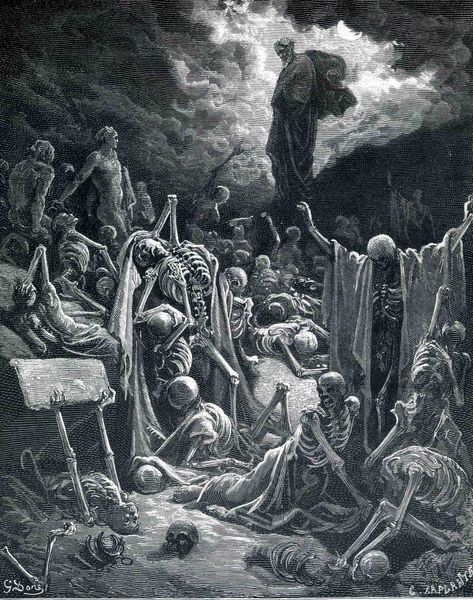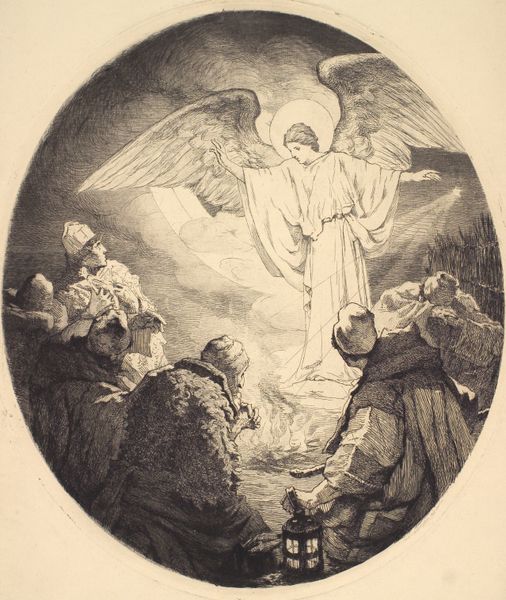
Copyright: Public domain
Editor: Gustave Doré's "Jacob Wrestling with the Angel," created in 1866, renders a dramatic scene with charcoal. It looks like a print. The tonal range he achieves is remarkable, especially considering the medium. What is your interpretation of this powerful piece? Curator: For me, it's essential to look at the materiality. Consider the availability and cost of charcoal in 19th century France. Was Doré using industrial-grade charcoal or something more refined? That informs our understanding. This print's widespread distribution suggests a market for religious imagery, and reveals how technological advancements in printmaking fueled a certain demand and consumerism. Editor: So, you’re thinking about how the means of production and distribution shaped its impact? Curator: Precisely. The linear quality—the distinct lines created by the medium—emphasize a narrative form that connects back to the pre-industrial age while simultaneously mass producing images with new printing tech. This connects ‘high art’ with a much more expanded visual economy. Where would you place its importance based on this distribution strategy? Editor: That’s a different way to approach it. I was drawn to the dramatic struggle, but I now appreciate that its value lies also in its cultural accessibility and the labor involved in the copies and their circulation. The charcoal, the print medium itself, is part of the story. Curator: It certainly is! Seeing art as tied to materials, processes and socio-economic realities changes our viewing experience and can raise interesting questions. Editor: Absolutely. Thanks, I'll never look at charcoal drawings the same way.
Comments
No comments
Be the first to comment and join the conversation on the ultimate creative platform.
